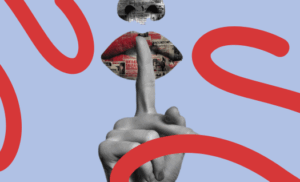When a crisis breaks out, it is already too late to prevent it. This does not mean that prevention work is impossible, nor that the precautions we have taken before are useless. On the contrary. Preparing for a crisis will help us to manage our brand’s reputation much more effectively, starting with knowing how to deal with it without having to improvise our reaction. Here are some tips so that, when the hurricane hits, we are not caught without the tools to deal with it.
Build a brand community
It is not easy, but the work of engaging with the community (mainly consumers and followers of our social media profiles) has a long-term benefit. If we do it in the right way, listening attentively, responding when doubts arise and resolving any problems, we will be able to strengthen stakeholders’ trust in the brand. This engagement, converted into a positive feeling and tending to support by default, will be key when something threatens the company’s credibility. On many occasions,
Design an operational crisis manual
We have said it many times. This document,
Monitor the conversation
You will have read or heard the term ‘active listening’ many times. Its translation, basically, is that it consists of activating the appropriate channels to be aware of what is being said through different communication channels about our brand, organisation, competition or sector. In recent years, social networks have become the main active listening environment we know. It is not the only one, but it is the most accessible. Although it is increasingly common that only a few create and disseminate content and the rest of us just consume it, it is still a basic channel for detecting problems at an early stage.
Generate content that strengthens your positioning
If you have identified the attributes of your brand, develop content that makes them visible and reinforces them. Build your organisation’s narrative or storytelling and transfer it to the channels in which you are present. Don’t limit yourself to waiting for others to tell, in your place, who you are. Do it yourself. This way, you will be better positioned in front of your target audiences when the scenario turns into a reputation crisis.
Have prepared spokespeople
Crisis scenarios often involve the need to stand up and explain. When they are serious, the degree of public exposure to which our spokespersons are subjected can be such that the slightest mistake invalidates them from ever having a public role again. It is therefore important to identify the organisation’s representatives and train them to know how they should be the voice of the company and how they should convey information and messages.
Strengthen internal culture
It is not all about actively communicating outwardly, but also about having strong foundations from within. A brand that is strong internally is more resilient when exposed in public.
These are our quick tips for managing brand reputation in the face of a crisis. But let me give you one final one:










